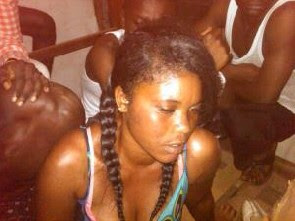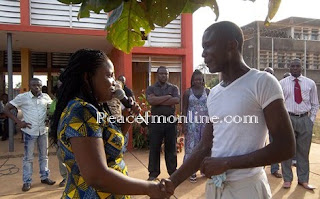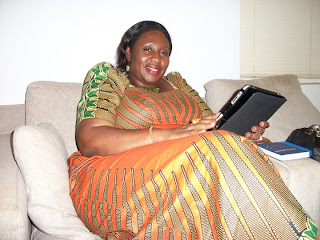RE: Fw: [LGBTI_health_africa] Straight, Gay or Lying? Bisexuality Revisited
Thanks for the information
JOSHUA ALABI
STRATEGIC INFORMATION OFFICER, HEARTLAND ALLIANCE PROJECT
CENTRE FOR POPULAR EDUCATION, HUMAN RIGHTS GHANA
MOBILE NO. 0244-89-61-29
OFFICE LINE -0289-108-829
-------- Original Message --------
Subject: Fw: [LGBTI_health_africa] Straight, Gay or Lying? Bisexuality
Revisited
From: Mac-Darling Cobbinah <macdarlingc@yahoo.com>
Date: Tue, September 25, 2012 8:48 pm
To: "macdarlingc.memory@blogger.com" <macdarlingc.memory@blogger.com>
----- Forwarded Message -----
From: GAY AND LESBIAN ALLIANCE UG <gala4ug@yahoo.com>
To: gay group <lgbti-info-uganda@googlegroups.com>
Cc: LGBTI health africa <LGBTI_health_africa@yahoogroups.com>
Sent: Saturday, September 22, 2012 10:40 PM
Subject: [LGBTI_health_africa] Straight, Gay or Lying? Bisexuality Revisited
Straight, Gay or Lying? Bisexuality Revisited
William DukeSome people are attracted to women; some are attracted to men. And some, if Sigmund Freud, Dr. Alfred Kinsey and millions of self-described bisexuals are to be believed, are drawn to both sexes.But a new study casts doubt on whether true bisexuality exists, at least in men.The study, by a team of psychologists in Chicago and Toronto, lends support to those who have long been skeptical that bisexuality is a distinct and stable sexual orientation.People who claim bisexuality, according to these critics, are usually homosexual, but are ambivalent about their homosexuality or simply closeted. "You're either gay, straight or lying," as some gay men have put it.In the new study, a team of psychologists directly measured genital arousal patterns in response to images of men and women. The psychologists found that men who identified themselves as bisexual were in fact exclusively aroused by either one sex or the other, usually by other men.The study is the largest of several small reports suggesting that the estimated 1.7 percent of men who identify themselves as bisexual show physical attraction patterns that differ substantially from their professed desires."Research on sexual orientation has been based almost entirely on self-reports, and this is one of the few good studies using physiological measures," said Dr. Lisa Diamond, an associate professor of psychology and gender identity at the University of Utah, who was not involved in the study.The discrepancy between what is happening in people's minds and what is going on in their bodies, she said, presents a puzzle "that the field now has to crack, and it raises this question about what we mean when we talk about desire.""We have assumed that everyone means the same thing," she added, "but here we have evidence that that is not the case."Several other researchers who have seen the study, scheduled to be published in the journal Psychological Science, said it would need to be repeated with larger numbers of bisexual men before clear conclusions could be drawn.Bisexual desires are sometimes transient and they are still poorly understood. Men and women also appear to differ in the frequency of bisexual attractions. "The last thing you want," said Dr. Randall Sell, an assistant professor of clinical socio-medical sciences at Columbia University, "is for some therapists to see this study and start telling bisexual people that they're wrong, that they're really on their way to homosexuality."He added, "We don't know nearly enough about sexual orientation and identity" to jump to these conclusions.In the experiment, psychologists at Northwestern University and the Center for Addiction and Mental Health in Toronto used advertisements in gay and alternative newspapers to recruit 101 young adult men. Thirty-three of the men identified themselves as bisexual, 30 as straight and 38 as homosexual.The researchers asked the men about their sexual desires and rated them on a scale from 0 to 6 on sexual orientation, with 0 to 1 indicating heterosexuality, and 5 to 6 indicating homosexuality. Bisexuality was measured by scores in the middle range.Seated alone in a laboratory room, the men then watched a series of erotic movies, some involving only women, others involving only men.Using a sensor to monitor sexual arousal, the researchers found what they expected: gay men showed arousal to images of men and little arousal to images of women, and heterosexual men showed arousal to women but not to men.But the men in the study who described themselves as bisexual did not have patterns of arousal that were consistent with their stated attraction to men and to women. Instead, about three-quarters of the group had arousal patterns identical to those of gay men; the rest were indistinguishable from heterosexuals."Regardless of whether the men were gay, straight or bisexual, they showed about four times more arousal" to one sex or the other, said Gerulf Rieger, a graduate psychology student at Northwestern and the study's lead author.Although about a third of the men in each group showed no significant arousal watching the movies, their lack of response did not change the overall findings, Mr. Rieger said.Gay and Lesbian Rights Are Human RightsRecent Activity:.
__,_._,___



Comments
Post a Comment